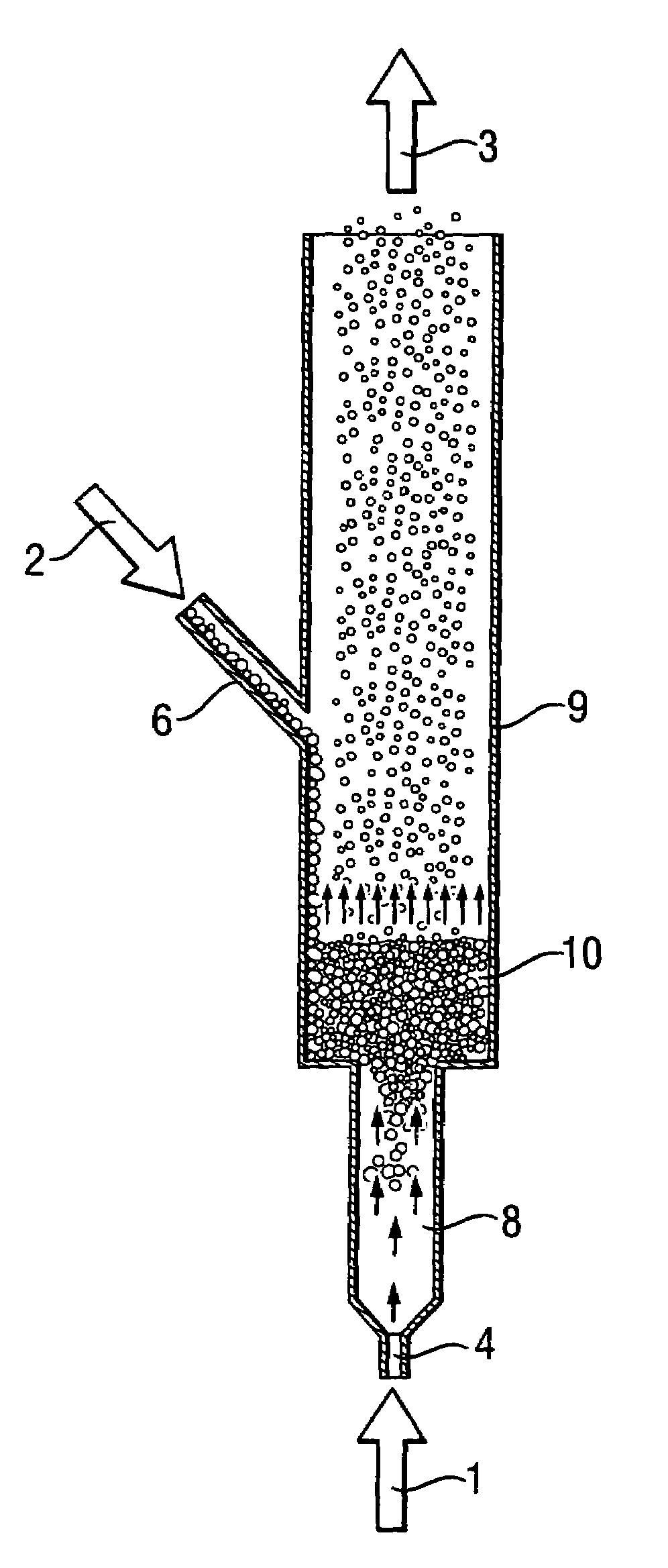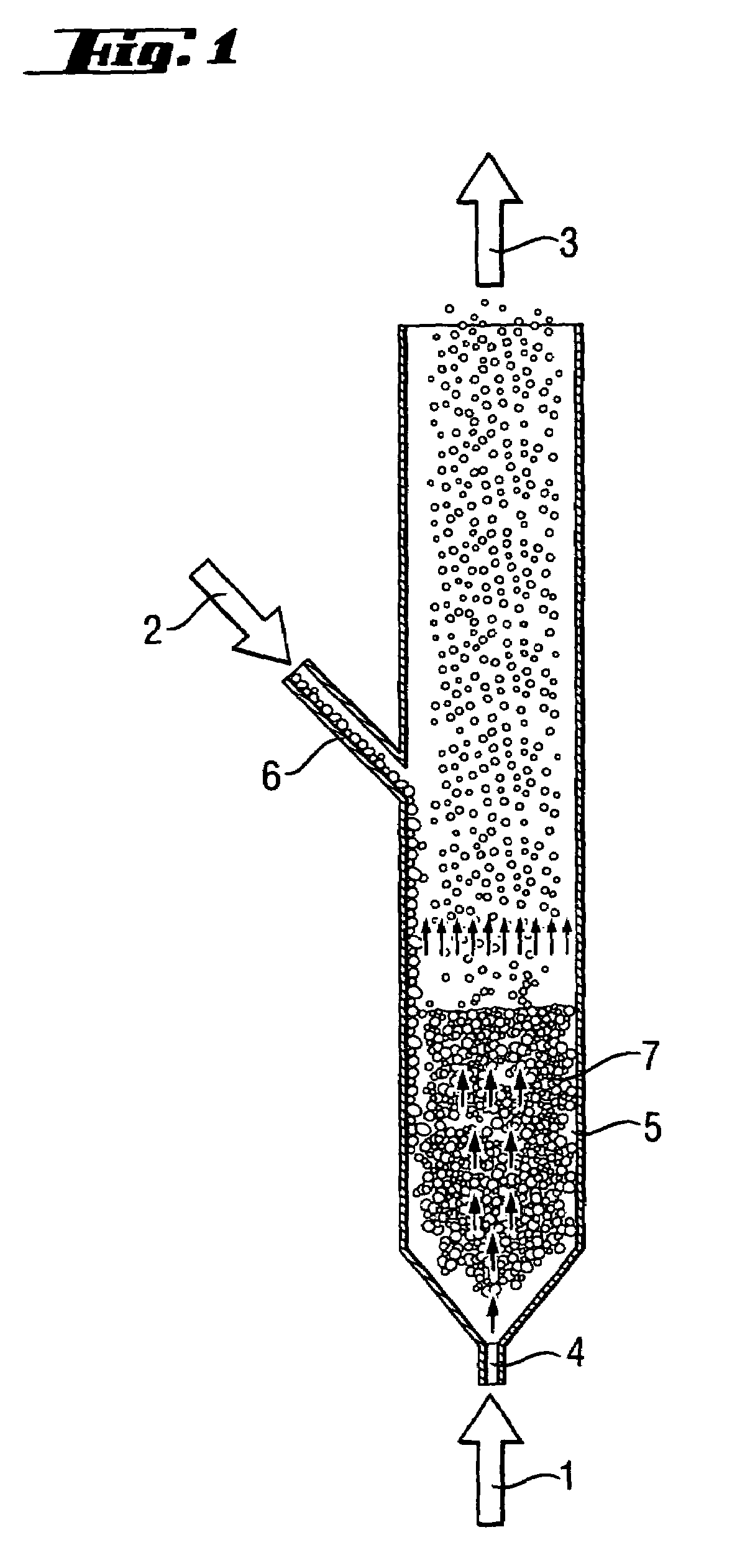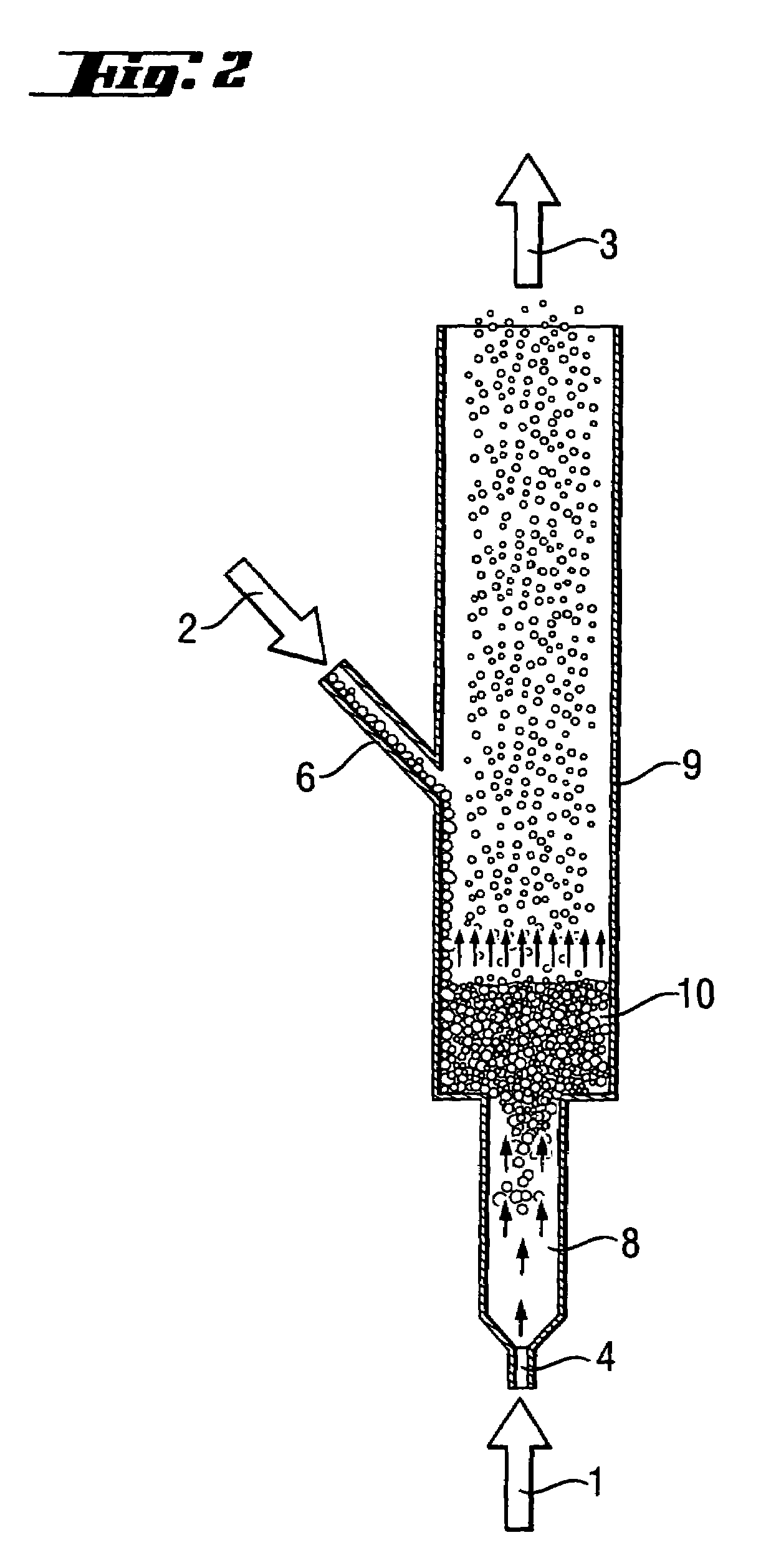Process and apparatus for comminuting silicon
a technology of silicon granules and comminution equipment, which is applied in the direction of gas current separation, solid separation, grain milling, etc., can solve the problems of silicon loss, silicon loss, dust being entrained in the exhaust gas system, and the inability to be too small, so as to achieve a smaller flow cross section and low cost
- Summary
- Abstract
- Description
- Claims
- Application Information
AI Technical Summary
Benefits of technology
Problems solved by technology
Method used
Image
Examples
example 1
[0074]High-purity silicon granules were comminuted in a milling installation as illustrated in FIG. 3. The purpose of the milling was to produce silicon seed particles with a grain size distribution of between approximately 150 μm and 500 μm, the mean diameter (mass-referenced) of which was to be between 300 μm and 400 μm, from silicon granules with a grain size distribution between 250 μm and 4000 μm, with a mean diameter (mass-referenced) of 711 μm.
[0075]The flow cross section of the jet chamber was 3020 mm2, the flow cross section of the first zigzag separator was 4200 mm2 and the flow cross section of the second zigzag separator was 19,600 mm2. The milling flow nozzle, a Laval nozzle, had a narrowest circular cross section with a diameter of 4 mm. The jet chamber had a length of 550 mm.
[0076]The milling installation was operated for 14.5 hours. The mean metering of the feed material was in this case 17.83 kg / h. The Laval nozzle was used to set a milling gas flow of 52 m3 / h (s.t....
PUM
 Login to View More
Login to View More Abstract
Description
Claims
Application Information
 Login to View More
Login to View More - R&D
- Intellectual Property
- Life Sciences
- Materials
- Tech Scout
- Unparalleled Data Quality
- Higher Quality Content
- 60% Fewer Hallucinations
Browse by: Latest US Patents, China's latest patents, Technical Efficacy Thesaurus, Application Domain, Technology Topic, Popular Technical Reports.
© 2025 PatSnap. All rights reserved.Legal|Privacy policy|Modern Slavery Act Transparency Statement|Sitemap|About US| Contact US: help@patsnap.com



